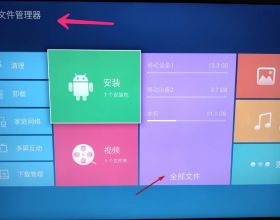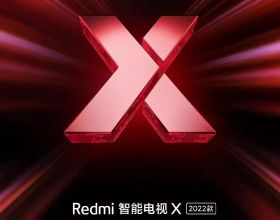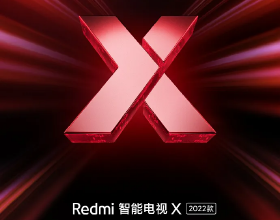蟲珀是琥珀的一種,數億年前,一些受過自然創傷或樹幹破裂的能夠分泌樹脂的樹木不斷的分泌樹脂,樹脂滴落後形成的化石為琥珀。
蟲珀就是琥珀內含昆蟲的包裹體。
2015年12月,江西南昌西漢海昏侯墓園考古隊員從主槨室提取了有葡萄般大小、兩端鑽有微孔、對齊貫穿的琥珀,這塊琥珀中還有昆蟲,屬於珍貴的蟲珀。專家認為,這些文物的出土再次印證墓主身份的高貴。
當植物受到外界刺激,會將分泌的樹脂從樹脂道排出來填滿傷口,殺菌消炎。
樹脂大部分形成於松柏鋼植物,這類植物在發芽階段體內就開始生成樹脂道,這些樹脂管道壁是由分泌細胞組成。植物在新陳代謝時就會把代謝物--樹脂分泌到樹脂道中並儲存起來,在植物受到外界傷害(如害蟲侵害、物理侵害等)時,樹木就會把樹脂從體內排出,覆蓋傷口或驅逐害蟲。
正是在那樣的時期,樹脂被排除粘附在在樹幹上後,會慢慢流淌或者滴落下來,在這個過程中可能會吞沒猝不及防的小生物,如昆蟲等。
世界琥珀的主要產地主要分佈在亞洲的中國撫順和緬甸,歐洲的波羅的海,美洲的多明尼加和墨西哥。這些產地均有蟲珀。
其中緬甸琥珀形成於一億三千萬年前的白堊紀時期,是最古老的琥珀,包裹的昆蟲等小生物都是白堊紀時期的遠古生物,具有較高的科研價值和觀賞價值。撫順琥珀形成於白堊紀末期,約6500萬年前,與緬甸琥珀硬度相仿
再好的珀種,無論多稀缺的蟲子,如果有明顯的雜裂或外漏,都會讓其價值大打折扣。對於微小的裂和冰片,或者說在不影響美觀及沒有傷到蟲體的情況下,這種裂是不必過於計較的,當然藏品除外。對於雜更要正確的對待,因蟲子被困後,定會做一些掙扎,所以時常會造成體腿分離和微小氣泡的正常場面,依我看來,這些所謂的"雜"恰是活蟲的表現。
數量再多、個體再大如果不夠完整,缺肢少體或是有外露也是絕對不行的。昆蟲在被樹脂包裹後不一定多久才會被掩埋地下,樹脂中本身含有氧氣會逐漸氧化昆蟲。就算深埋地下也會被周邊物質石化(鈣化)和原體會有相差的地方,甚至有時會變得模糊不清,此蟲珀透明清晰,具有極高的收藏價值。
英文翻譯:Entomopaths are a type of amber, and hundreds of millions of years ago, trees that were able to secrete resin from natural wounds or broken trunks continued to secrete resin, which trickled down and fossilized into amber.
A worm is an insect inclusion in amber.
In December 2015, archaeologists at the Haihunhou Tomb of the Western Han Dynasty in Nanchang, Jiangxi province, extracted a grape-sized amber with tiny holes drilled at both ends and threaded through it from the main coffin chamber. The amber also contained insects, which were precious. Experts believe that these cultural relics unearthed again confirm the identity of the tomb owner of the noble.
When the plant is stimulated by the outside world, the resin secreted by the resin canal will be discharged to fill the wound, sterilization and inflammation.
Resin is mostly formed in conifers, which begin to develop resin channels in their bodies during germination. The walls of these channels are made up of secretory cells. Plants in the metabolism will be metabolite - resin secreted into the resin channel and stored, in the plant by external damage (such as pests, physical damage, etc.), the tree will be resin discharged from the body, covering wounds or drive out pests.
It is during these periods that the resin, freed from its attachment to the tree trunk, trickles down or trickles down, potentially engulfing unsuspecting creatures such as insects.
The world's main amber production is mainly distributed in Asia fushun China and Myanmar, The Baltic Sea in Europe, dominica and Mexico in the Americas. All of these places have insect pearl.
Among them, Burmese amber was formed in the Cretaceous period 130 million years ago, which is the oldest amber. Insects and other small creatures are all ancient creatures in the Cretaceous period, which has high scientific research value and ornamental value. Fushun amber was formed at the end of the Cretaceous period, about 65 million years ago, and is similar in hardness to Burmese amber
No matter how good the seed, no matter how scarce the worm, if there is obvious cleft or leakage, will make its value greatly discounted. For tiny cracks and borneol, or in the case of no impact on beauty and no damage to the insect body, this kind of crack is not too much care, except of course the collection. It is necessary to treat the insects correctly, because when they are trapped, they will struggle, so it often leads to the normal scene of body leg separation and tiny bubbles. In my opinion, these so-called "miscellaneous" are exactly the performance of live insects.
No matter how many, no matter how big the individual is, if it is not complete, it is absolutely not acceptable to lose limbs or have exposure. Insects may not be buried long after being wrapped in the resin, which contains its own oxygen and gradually oxidizes them. Even if buried deep underground, it will be petrified (calcified) by surrounding materials and there are differences with the original experience, and sometimes it will become blurred. This insect is transparent and clear, and has a high collection value.

















